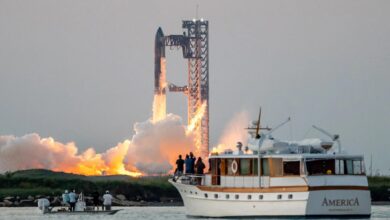A big step has been taken in completing the construction of NASA’s next generation space telescope

The scientists responsible for the construction of NASA’s “Nancy Grace Roman” space telescope say that they have achieved an important achievement in the field of building this observatory. Nancy Grace Roman is a next-generation space telescope that aims to answer important questions about dark matter, exoplanets, and infrared astrophysics.
In early November, the Optical Array Telescope (OTA), a key component of the Nancy Grace Roman, was shipped from Rochester, New York, where it was designed and built by Al-Harris, to NASA’s Goddard Space Flight Center in “Greenbelt” of Maryland was delivered.
The optical array includes a high-tech main mirror designed to capture and focus faint infrared light from the distant universe, as well as nine other carefully engineered mirrors. The optical assembly with its structural supports and advanced electronics as the “eye of the telescope» It will work and enable groundbreaking observations to uncover the secrets of the universe.
Handing over the eye of the telescope is a vital step towards the launch of the Roman Space Telescope. The telescope is expected to expand our understanding of the cosmos and revolutionize the study of dark energy, the formation of galaxies and planetary systems beyond our solar system.
The Nancy Grace Roman Space Telescope will do with just one image what the Hubble Space Telescope does with hundreds of images.
“Projects like this are superior in every way,” Scott Smith, director of telescope assembly at NASA, told Space.com. Because the drive to achieve perfection is intensified when building and delivering a space telescope that will push the boundaries of engineering to answer impossible scientific questions.”
ROMAN will surpass its predecessor, the Hubble Space Telescope, and have more advanced capabilities to survey the sky on a large scale.
Referring to NASA’s $10 billion James Webb Space Telescope, which was launched in December 2021, Smith said, “Just like a cell phone that has multiple cameras to capture wide-angle and zoomed images, Webb telescopes and Roman will work together to explore our world from different perspectives. Roman’s technology and scientific capabilities will also serve as a critical next step in building the “Habitable Worlds Observatory”; A telescope that will increase our understanding of the universe and advance the search for planets with suitable conditions to support life.








